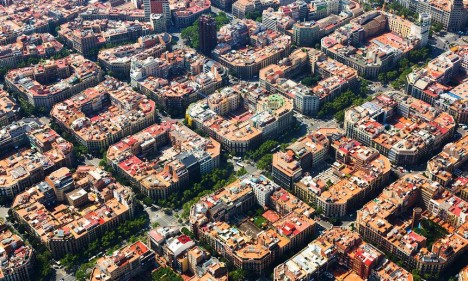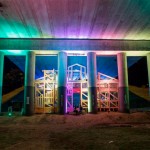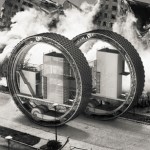Matt Woods was relaxing on his balcony in Bondi Beach, Australia, when he decided to launch his DJI Mavic 2 Zoom drone and capture some footage. To his horror, he discovered a lone spear fisherman in the water using a speargun to ward off an aggressive mako shark. The ordeal lasted 30 minutes, until help arrived.
Woods, 36, took off from his beachside balcony around 4:00 pm. He expected to capture some scenic footage of the swimmers and surfers that frequent the beach on a daily basis. Occasionally he would spot whales but up until that moment, he hadn’t witnessed a shark.
‘I spotted the shark straight away as there was a big bait ball of fish and as I got closer I could see it was also circling the diver in the water,’ Woods revealed to the UK’s Daily Mail. ‘The diver was fending the shark off and poking it with his spear gun. The shark then went after his float that is attached to the diver. He was charging it and trying to bite it, thrashing it about.’
Instead of being a helpless bystander, Woods took action. He grabbed his girlfriend’s cell phone and alerted nearby lifeguards to the conundrum before he resumed filming the battle. After clearing swimmers close to the shore from the water, lifeguards arrived to the scene on jet skis to rescue the beleaguered swimmer – roughly 30 minutes after Woods’ initial phone call.
 |
| This grainy image reveals the fisherman using his spear to fend off the aggressive, predatory shark. |
‘I felt as if we helped as best we could,’ he revealed. ‘We got on the phone to the lifeguards straight away… while I stayed over the shark on my drone the whole time so we could guide them in. I was pretty happy once the lifeguard came out and I could see the diver had managed to scramble onto the rocks and reef.’
Woods went out to the scene after the ordeal and attempted to locate the diver and show him the footage. He wasn’t able to find him. While there have only been nine recorded attacks from mako sharks on humans, since 1580, experts say the sharks are sometimes attracted to fishermen, in particular, if they’re carrying dead fish.
Articles: Digital Photography Review (dpreview.com)






























You must be logged in to post a comment.